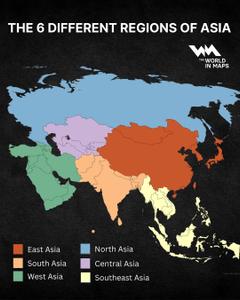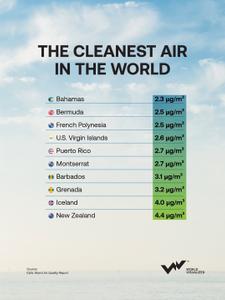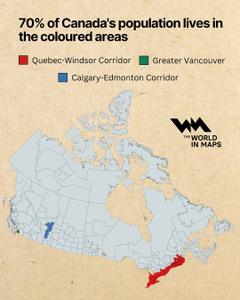geography

Maps / 10 weeks ago
How far are Italian provinces from the sea?
Italy is often romanticised as a land of endless Mediterranean beaches and sparkling coastlines, but not all Italians live close to the sea. A detailed map created by The World in Maps reveals how far each Italian province is from the coast, ranking them from coastal to quadruple-landlocked.

Maps / 11 weeks ago
Ireland vs South Korea: Two countries that look alike on the map but different
An infographic from The World in Maps overlays the outline of Ireland on the Korean Peninsula, showing how the two countries have remarkably similar north–south silhouettes. Beyond their shapes, however, South Korea and Ireland diverge sharply in terms of geography, population, and economy. South Korea spans about 100,222 km² and has around 51.2 million people (2025), ranking as the world’s 29th‑most‑populous country. Ireland covers roughly 69,947 km² and has 5.34 million residents.

Maps / 12 weeks ago
Mapping Asia: The six regions that shape the world’s biggest continent
Asia, the world’s largest continent, is often divided into six distinct regions to better understand its vast geography, cultures, and economies. A new visualisation highlights these divisions: East Asia, South Asia, Southeast Asia, Central Asia, West Asia, and North Asia. The United Nations describes Asia as the most populous continent, home to 4.7 billion people (nearly 60% of the world’s population). It stretches from the deserts of the Middle East to the high peaks of the Himalayas and the dense cities of East Asia.

Environment / 13 weeks ago
Why a handful of islands have the world’s cleanest air
The air quality ranking isn’t led by vast industrial economies but by tiny island territories with clean skies and windswept coastlines. The IQAir 2024 World Air Quality Report reveals that the Bahamas, Bermuda and French Polynesia recorded average fine‑particulate (PM₂.₅) concentrations of 2.3–2.6 µg/m³, well below the World Health Organisation’s guideline of 5.0 µg/m³.

Maps / 13 weeks ago
Chile’s extreme length: A country so long it could cover the Atlantic
Chile is so long that, if rotated, it could stretch across the North Atlantic from eastern Canada to Spain. The country runs along the southwest edge of South America between the Andes Mountains and the Pacific Ocean. According to a 2015 article in Molecular Genetics & Genomic Medicine, Chile’s mainland spans 4,329 km (2,689.92 mi) from north to south, making it “the longest country in the world”.

Maps / 23 weeks ago
Russia, Canada, and China: The giants of the world’s landmass
Russia, Canada, and China continue to dominate the rankings of the world’s largest countries by land area. Russia covers an astounding 17.10 million square kilometres. According to the World Atlas, Russia’s vast territory stretches across Europe and Asia, encompassing 11 time zones. This immense landmass includes a mix of tundra, taiga, mountains, and volcanic ridges. Notably, Russia boasts the world’s largest forest carbon reserve, a key player in climate regulation.

Maps / 30 weeks ago
Why over 70% of Canadians live in just three urban corridors
Canada is the second-largest country in the world by total area, covering approximately 9.98 million square kilometres (3.85 million square miles). It spans six time zones and stretches from the Atlantic Ocean in the east to the Pacific Ocean in the west, and northward into the Arctic. Canada's population is, however, relatively small—around 40 million people as of 2025. That gives it one of the lowest population densities in the world: about 4 people per square kilometre.

Maps / 39 weeks ago




